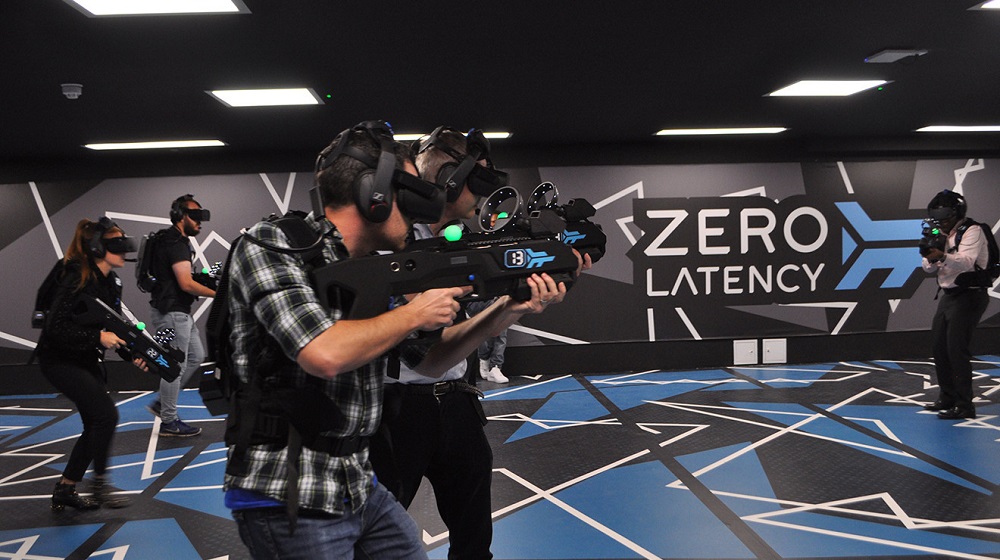In the modern workplace, the need for innovative team-building activities has never been more apparent. With the rise of remote work and global teams, traditional methods of fostering teamwork and collaboration are often insufficient. Enter Virtual Reality (VR) games—a cutting-edge solution that combines the excitement of gaming with the practical benefits of team building. VR is revolutionizing how companies approach team-building activities, providing a unique platform for employees to connect, collaborate, and grow together, regardless of physical location.
This article will explore how VR games are transforming team-building activities by creating real connections in a virtual world. We’ll delve into the benefits of using VR for team building, the various types of Virtual Reality games that are ideal for fostering teamwork, and how these immersive experiences can translate into improved collaboration and communication in the workplace.
The Evolution of Team Building
Traditional Team Building Activities: Strengths and Limitations
Traditional team-building activities have long been a staple in corporate environments, with activities ranging from trust falls and outdoor adventures to problem-solving exercises and group discussions. These activities are designed to promote collaboration, build trust, and improve communication among team members. While they can be effective, they also come with certain limitations.
For one, traditional team-building activities often require all participants to be in the same physical location, which can be challenging for remote or geographically dispersed teams. Additionally, some employees may find these activities outdated, unengaging, or even uncomfortable, which can hinder their effectiveness. As the workplace continues to evolve, there’s a growing demand for more dynamic and inclusive team-building solutions.
The Emergence of Virtual Reality in Team Building
Virtual Reality has emerged as a powerful tool for modern team-building activities. By creating immersive, interactive environments, VR allows teams to engage in activities that are not only fun and challenging but also deeply collaborative. Unlike traditional team-building exercises, VR games can be accessed from anywhere in the world, making them ideal for remote teams. Furthermore, the immersive nature of VR ensures that all participants are fully engaged, fostering a sense of presence and connection that is often lacking in other virtual interactions.
Benefits of Virtual Reality Games for Team Building
Enhanced Engagement and Participation
One of the most significant benefits of using Virtual Reality games for team-building activities is the level of engagement they offer. In a VR environment, participants are fully immersed in the experience, which means they are more likely to be actively involved in the activities. The immersive nature of VR eliminates many of the distractions that can detract from traditional team-building exercises, ensuring that all team members are focused on the task at hand.
This heightened level of engagement also encourages participation from all team members, including those who may be more introverted or reluctant to engage in traditional activities. In a VR environment, everyone is on an equal footing, which can help break down barriers and promote a more inclusive team dynamic.
Encouraging Creativity and Innovation
Virtual Reality games are not bound by the constraints of the physical world, which means they can offer experiences that are far more creative and imaginative than traditional team-building activities. In a VR environment, teams can explore fantastical worlds, take on unique challenges, and experiment with new ideas in a safe and controlled setting.
This freedom to explore and innovate can inspire creativity and out-of-the-box thinking, both of which are essential for problem-solving and driving innovation in the workplace. By encouraging teams to think creatively and approach challenges from new angles, VR team-building activities can help foster a culture of innovation and continuous improvement.
Reducing Stress and Promoting Well-being
Workplace stress is a common issue that can negatively impact team dynamics and productivity. Virtual Reality games offer a fun and engaging way to relieve stress and promote well-being among team members.
Furthermore, many VR games incorporate elements of physical activity, such as moving around in a virtual space or using motion controllers to interact with the environment. This physical engagement can help boost endorphins and improve mood, contributing to a more positive and energetic team environment.
Implementing VR Team Building in the Workplace
Choosing the Right VR Platform and Games
When implementing VR team-building activities in the workplace, it’s important to choose the right platform and games that align with your team’s needs and objectives. Consider factors such as the size of your team, the type of challenges you want to focus on (e.g., communication, problem-solving, creativity), and the level of physical activity involved.
Many VR platforms offer a range of games specifically designed for team building, with options that cater to different skill levels and interests. It’s also important to ensure that the chosen platform is accessible to all team members, including those who may be new to VR or have limited experience with gaming.
Facilitating Effective Team Building in VR
To maximize the benefits of VR team-building activities, it’s essential to facilitate the experience effectively. This includes setting clear goals and objectives for the activity, providing guidance and support to participants, and debriefing the team afterward to discuss what they learned and how they can apply these lessons in the workplace.
Facilitators should encourage open communication and ensure that all team members are actively participating in the activity. It’s also important to create a positive and supportive environment where team members feel comfortable taking risks, making mistakes, and learning from each other.
Conclusion
Virtual Reality games are transforming the landscape of team-building activities, offering a unique and effective way to create real connections in a virtual world. The immersive nature of VR allows teams to engage in challenging, collaborative experiences that foster trust, communication, and creativity. As the workplace continues to evolve, VR team-building activities provide a dynamic and inclusive solution for building strong, cohesive teams, regardless of physical location.



